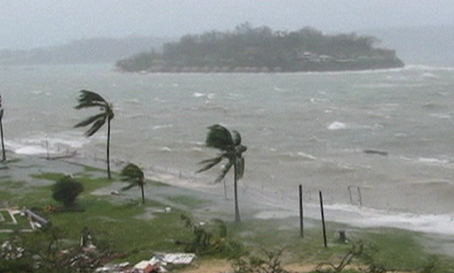IMD to launch Impact-based Cyclone Warning System
The Director General of the Indian Meteorological Department Mrutunjay Mohapatra recently announced that the IMD is to launch “Impact based Cyclonic Warning Systems”. The system will help minimise economic losses and damages due to property in the intense weather system.
About the new System
The new system will provide district or location specific warnings. The warnings will be based on information related to the infrastructure in the region, local population, settlements, land use. For instance, if a district is to be hit by a wind speed of 160 km per hour, then the system will warn about the infrastructures to be affected at that wind speed.
The New System was designed and developed by the National Disaster Management Authority. It has also been developing web-based dynamic composite risk atlas in collaboration with IMD and coastal states.
Hazards monitored by IMD
The following hazards are monitored by the Indian Meteorological Organization
- Hydro Meteorological Hazards: tropical cyclones, support for floods, drought, snow avalanches and climate change impacts on weather events
- Environmental Impacts: Air pollution, coastal zone management, eco-system monitoring and coastal erosion
- Geological Hazards: Earthquakes and Tsunamis. The monitoring of these hazards is done by the NCS and INCOIS. IMD provides support for rain induced mudslides and landslides.
INCOIS is Indian Ocean Centre for Ocean Information Services
IMD
It operates under Ministry of Earth Sciences. It is headquartered in Delhi. It operates hundreds of earth observation stations in India. They are mainly located in Mumbai, Nagpur, Kolkata and Pune. Also, IMD operates meteorological observation stations in Antarctica.
India operates meteorological stations in Antarctica under Project Maitri.
IMD is also responsible to forecast, monitor the tropical cyclones in Indian Ocean Region. IT includes Malacca Straits, Persian Gulf, Arabian Sea and Bay of Bengal.
In 2016, IMD launched “SAMAR” to study the concentration of Black carbon, environmental visibility, radiative properties of aerosols. SAMAR is System of Aerosol Monitoring and Research. The project has 16 aethalometers, 12 nephelometers and 12 sky radio meters.
Aethalometers are instruments used to measure optically absorbing suspended Particulate Matter. They are usually black in colour. Nephelometers are instruments used to measure particulates suspended in gas or liquid.
Month: Current Affairs - October, 2020


